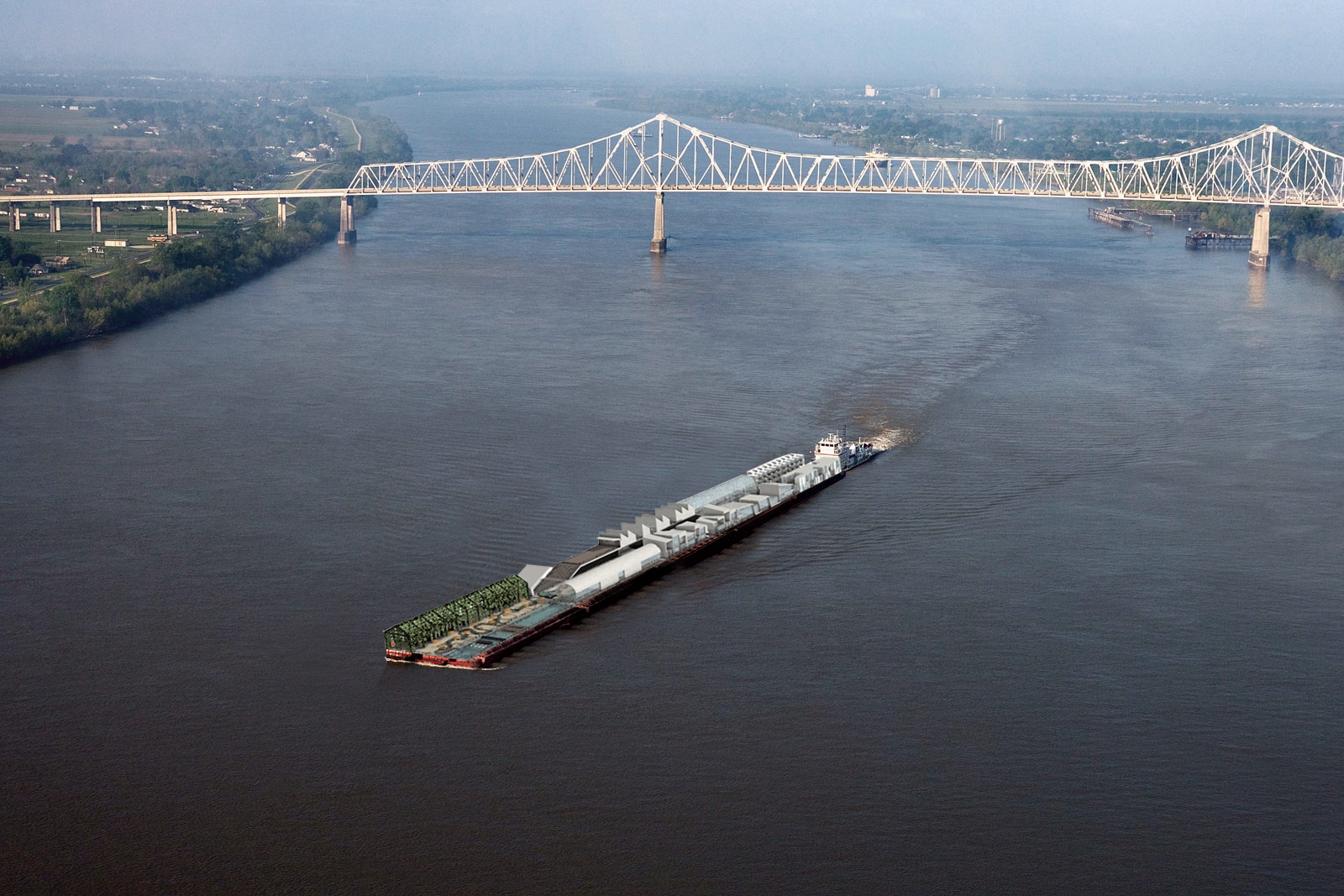
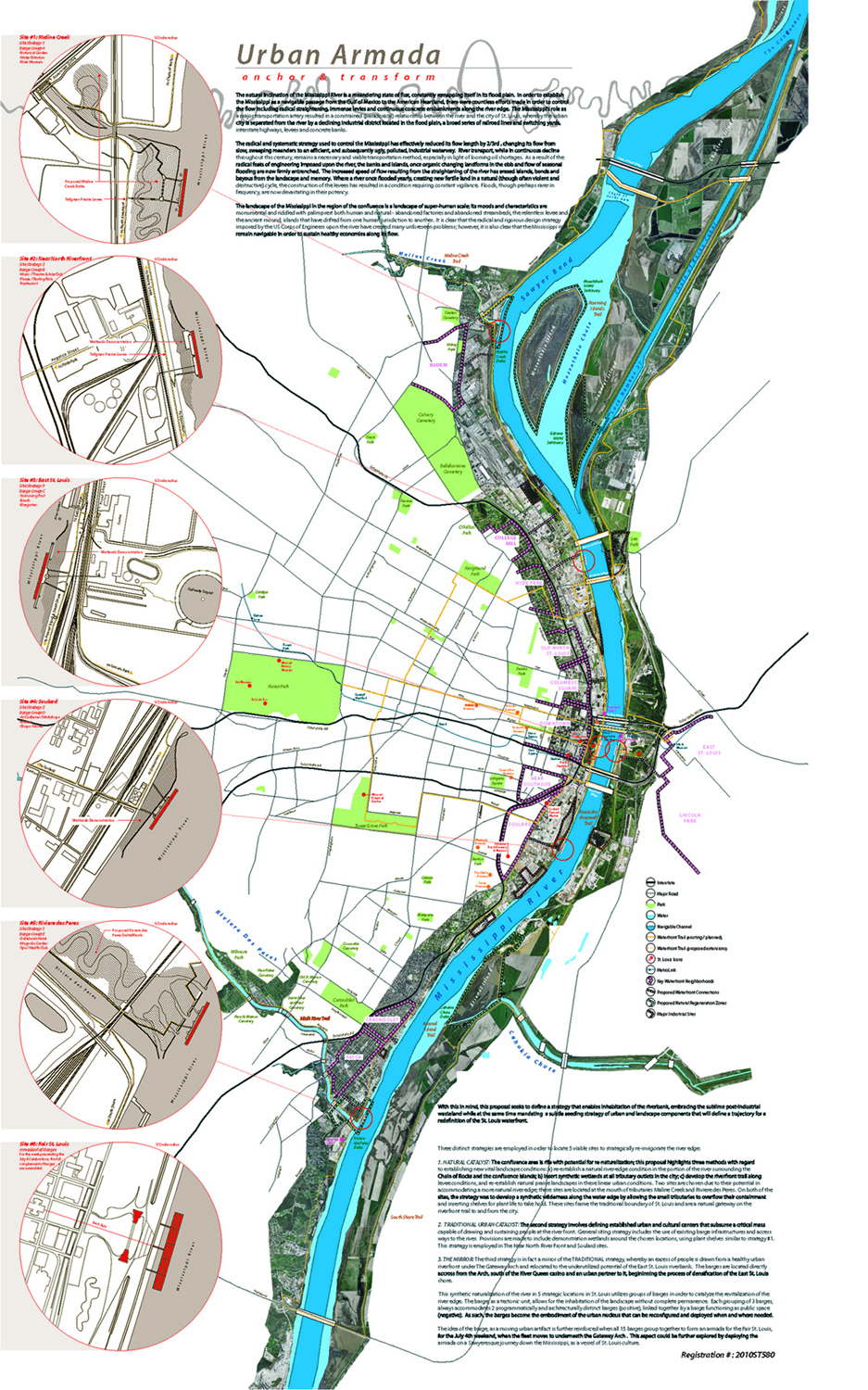
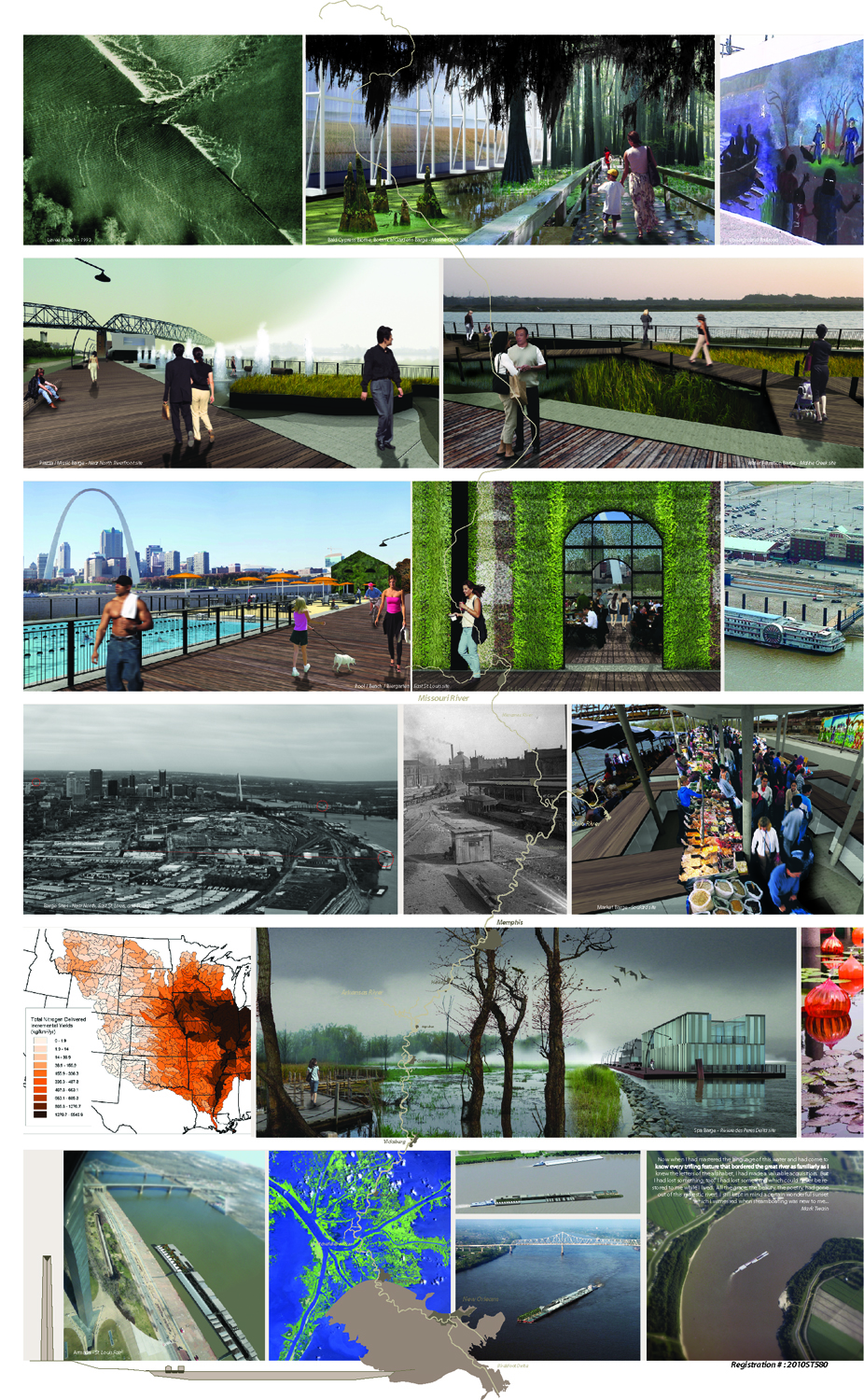
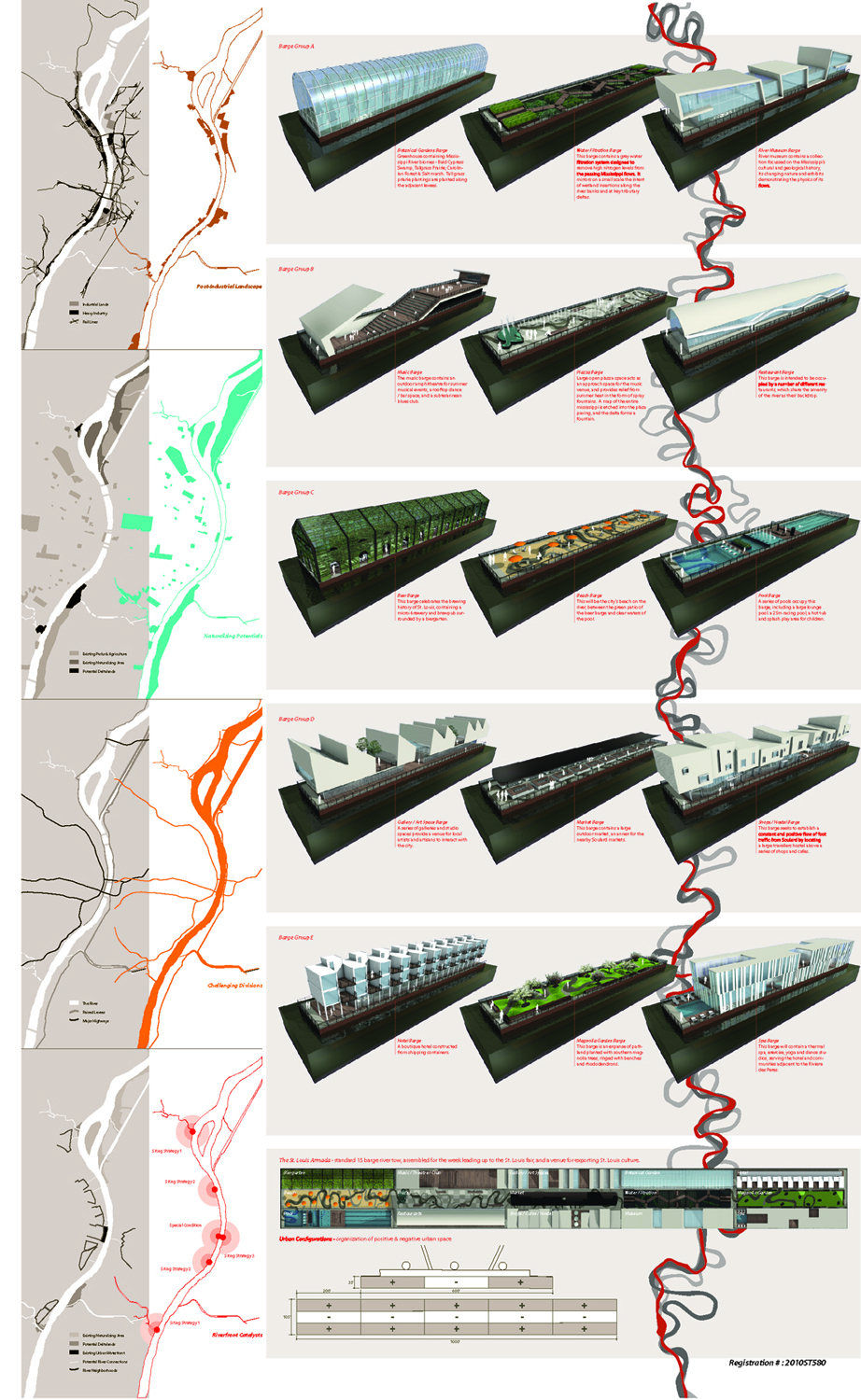
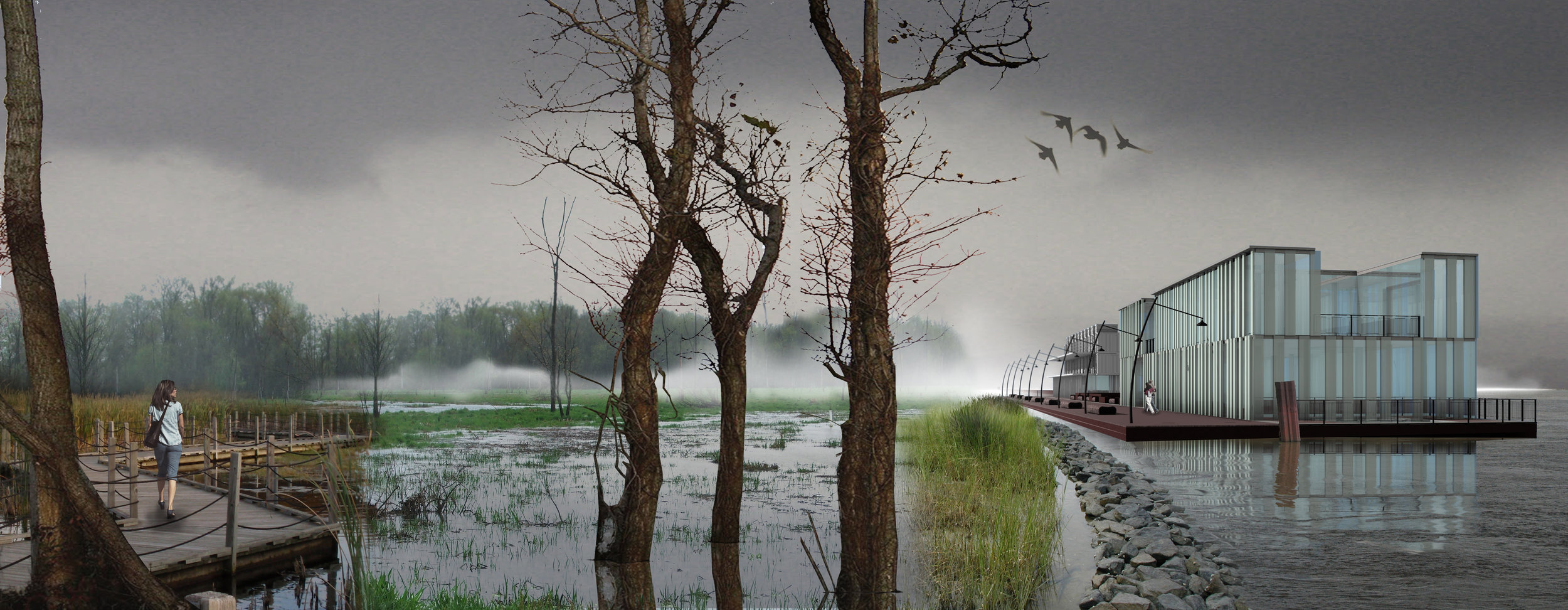
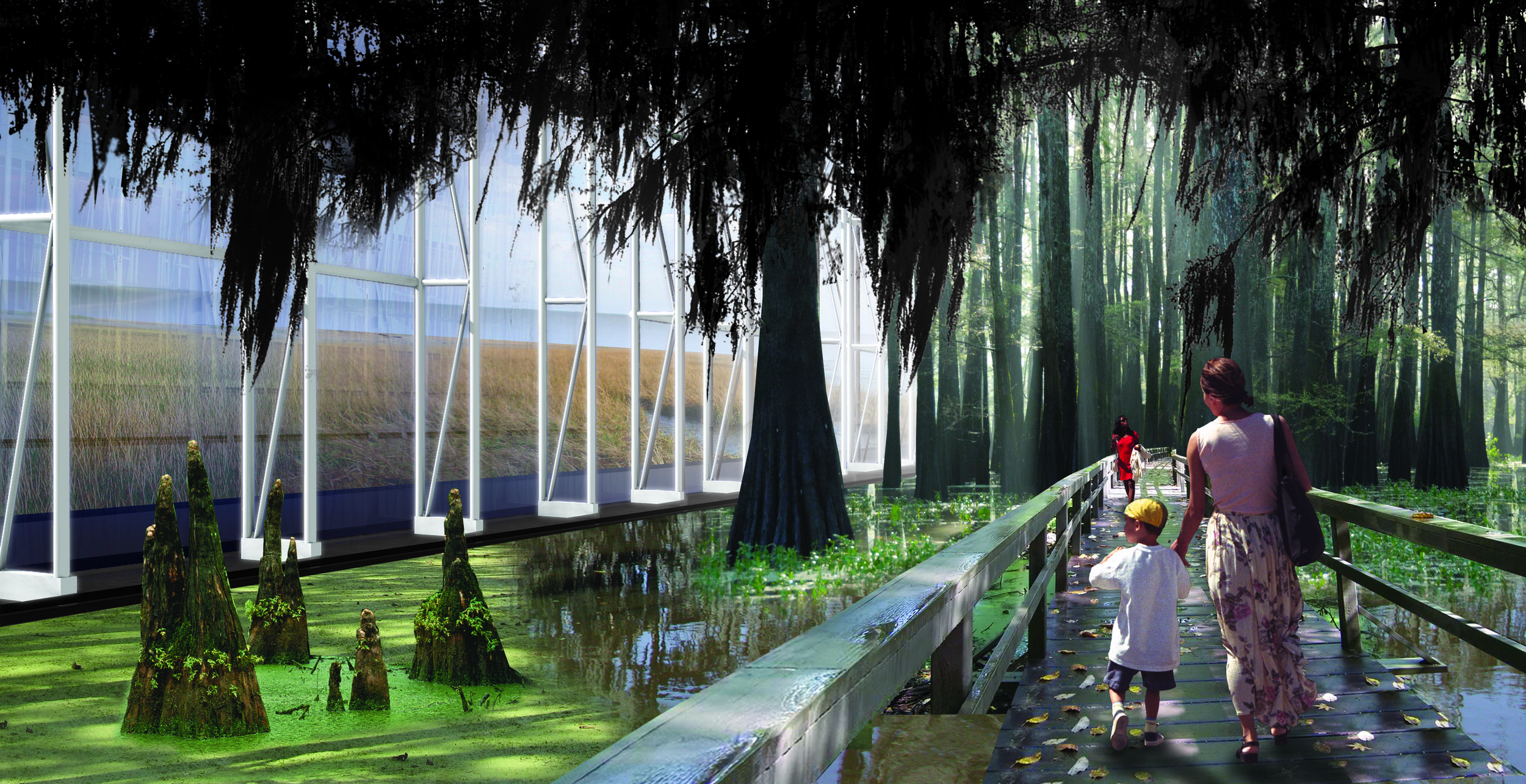
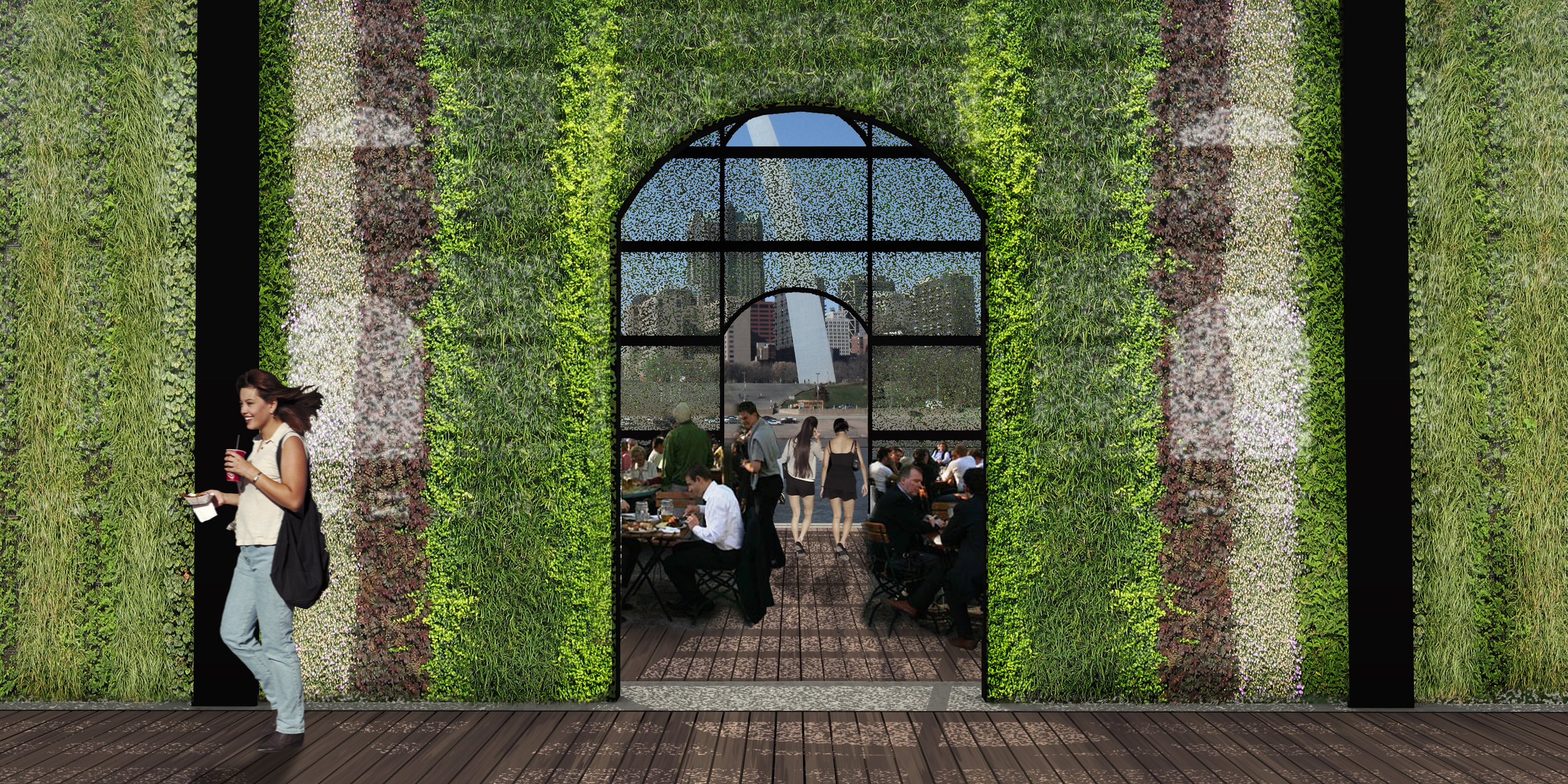
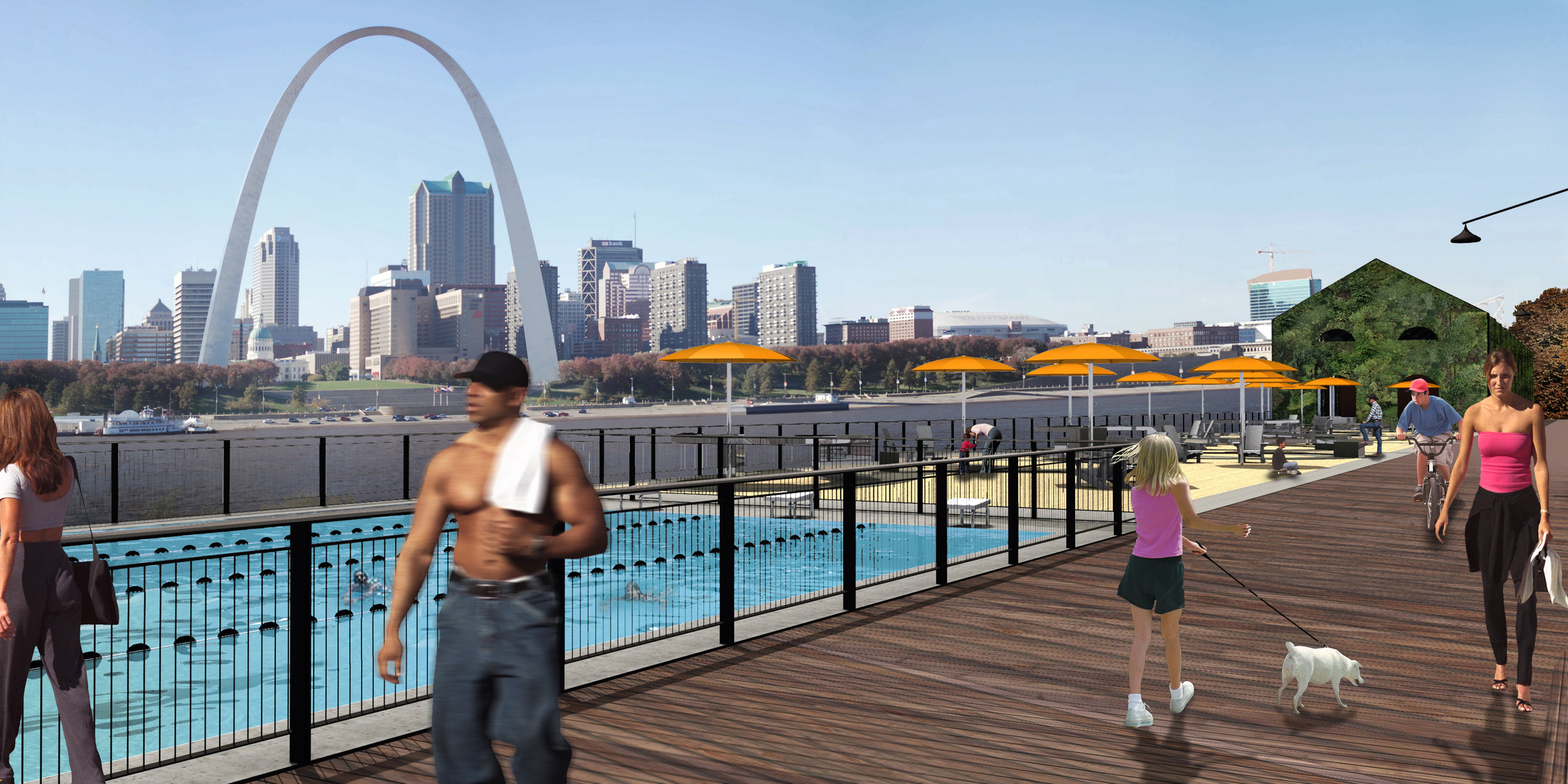
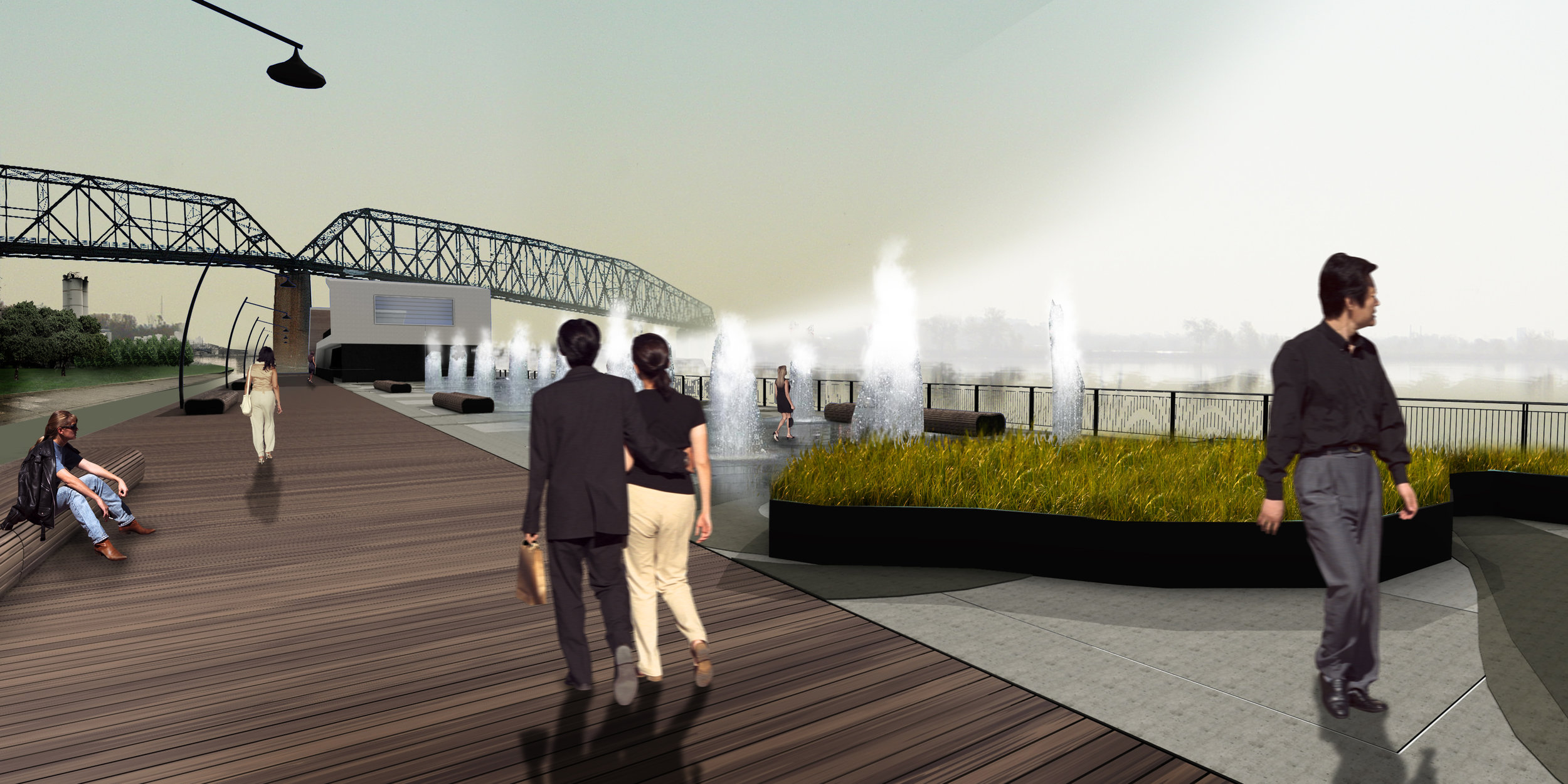
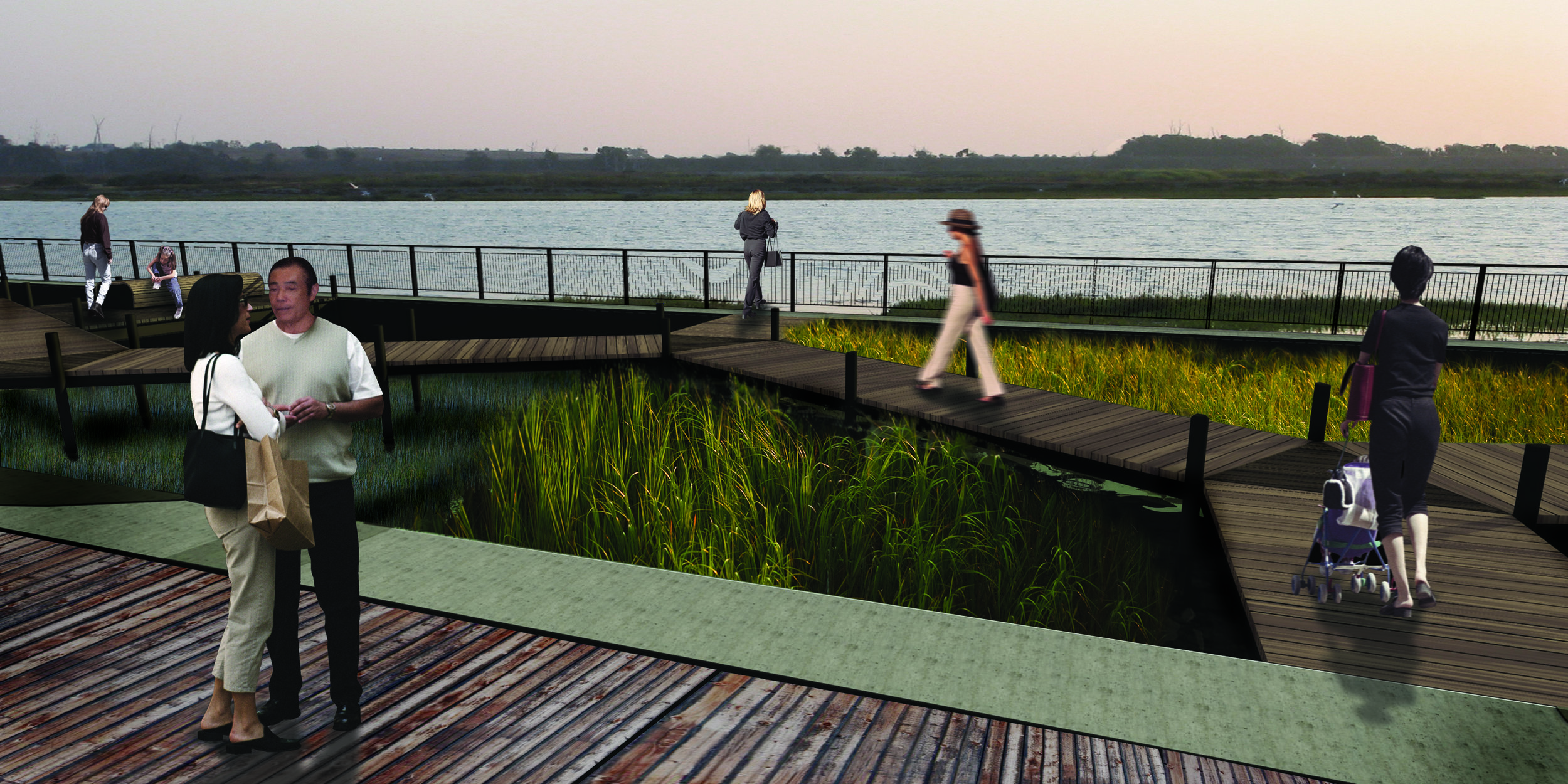
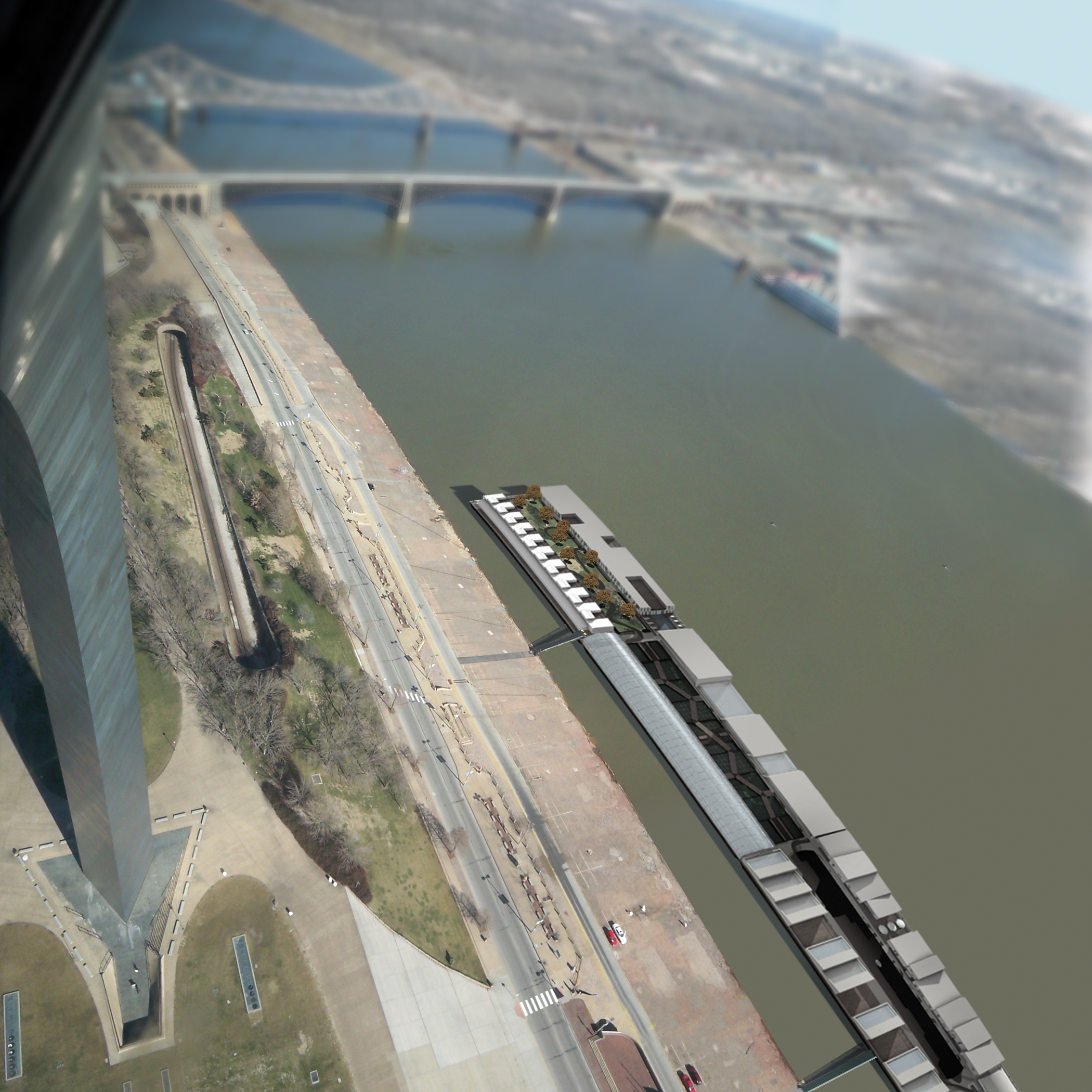

The Steedman Fellowship competition brief outlined a need to reframe the constrained relationship between the city of St. Louis and the Mississippi river while
The natural inclination of the Mississippi River is a meandering state of flux, constantly remapping itself in its food plain. In order to establish the Mississippi as a navigable passage from the Gulf of Mexico to the American Heartland, there were countless efforts made in order to control the flow including radical straightening, immense levies and continuous concrete embankments along the river edge. The radical and systematic strategy used to control the Mississippi has effectively reduced its flow length by 2/3rd , changing its flow from slow, sweeping meanders to an efficient, and subsequently ugly, polluted, industrial waterway. The Mississippi’s role as a major transportation artery resulted in a constrained (paradoxical) relationship between the river and the city of St. Louis, whereby the urban city is separated from the river by a declining industrial district located in the flood plain, a broad series of railroad lines and switching yards, interstate highways, levees and concrete banks. Despite the unforeseen environmental and urban problems that resulted from the engineering of the river, is also clear that the Mississippi must remain navigable in order to sustain healthy economies along its flow.
With this in mind, this proposal seeks to deploy a strategy that enables inhabitation of the riverbank, embracing the sublime post-industrial wasteland while at the same time mandating a subtle seeding strategy of urban and landscape components that will define a trajectory for a reframing of the St. Louis waterfront.
This synthetic naturalization of the river in 5 strategic locations in St. Louis utilizes groups of barges in order to catalyze the revitalization of the river edge. The barge, as a tectonic unit, allows for the inhabitation of the landscape without complete permanence. Each grouping of 3 barges, always accommodates 2 programmatically and architecturally distinct barges (positive), linked together by a barge functioning as public space (negative). As such, the barges become the embodiment of the urban nucleus that can be reconfigured and deployed when and where needed.
The idea of the barge, as a moving urban artifact is further reinforced when all 15 barges group together to form an armada for the Fair St. Louis, for the July 4th weekend, when the fleet moves to underneath the Gateway Arch . This aspect could be further explored by deploying the armada on a Sawyeresque journey down the Mississippi, as a vessel of St. Louis culture.